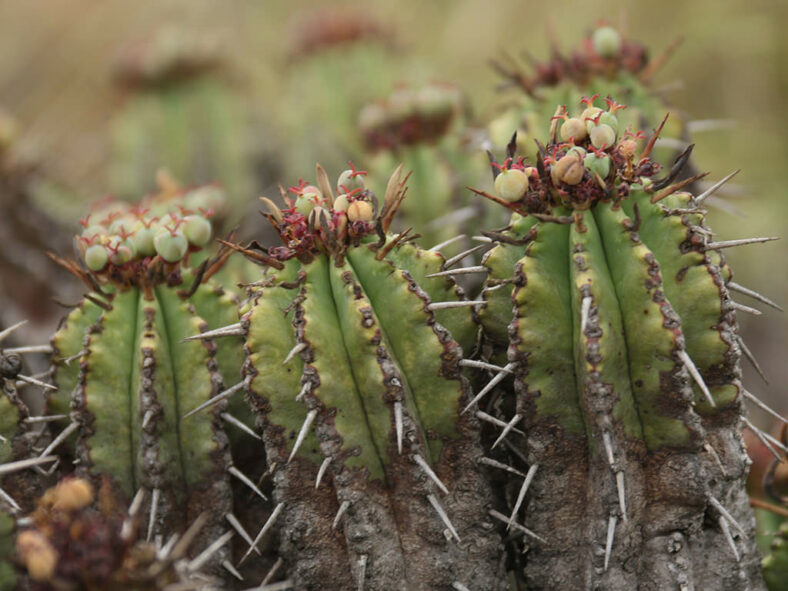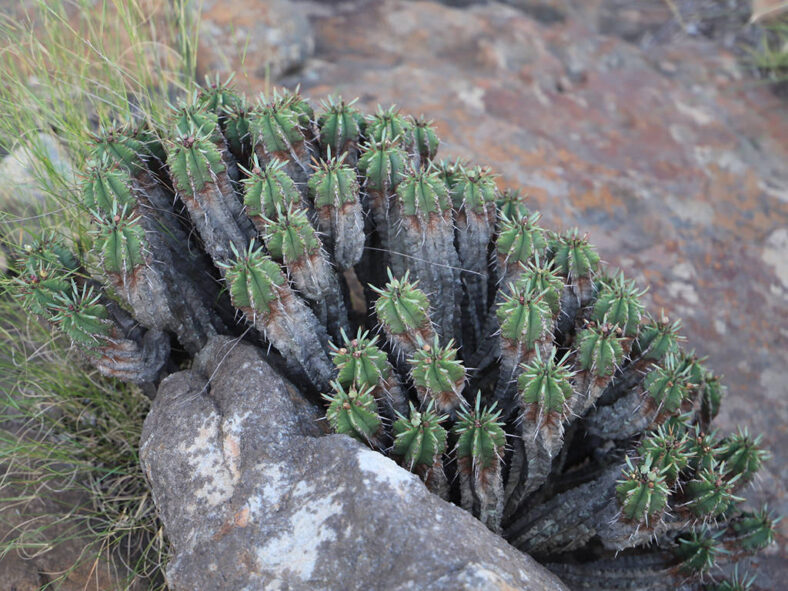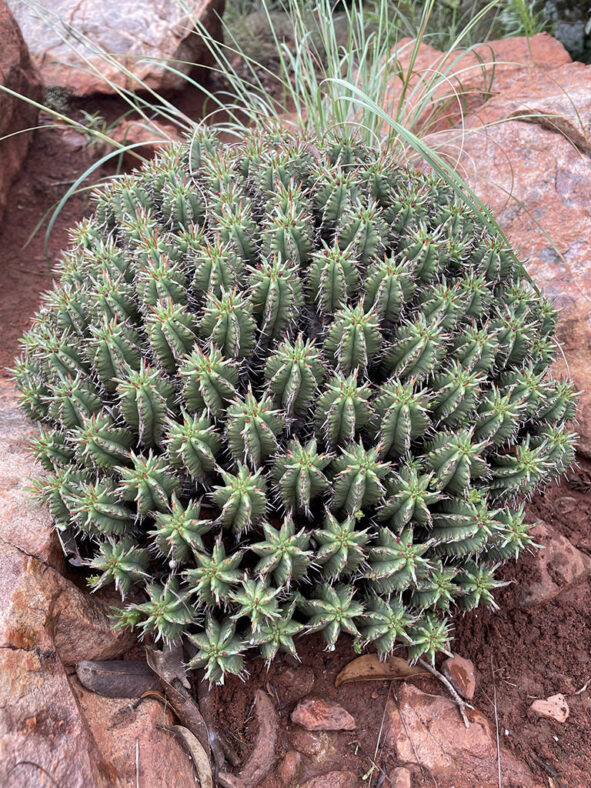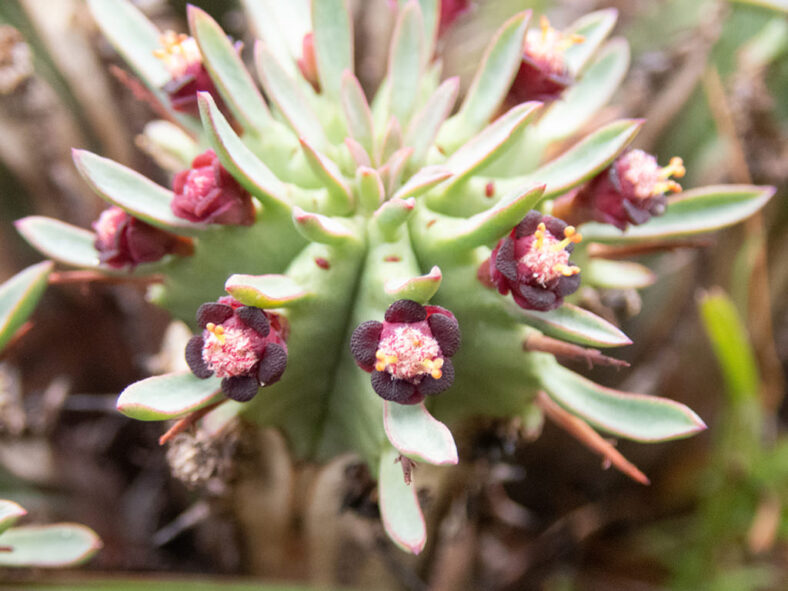Scientific Name
Euphorbia pulvinata Marloth
Common Name(s)
Pincushion Euphorbia
Scientific Classification
Family: Euphorbiaceae
Subfamily: Euphorbioideae
Tribe: Euphorbieae
Subtribe: Euphorbiinae
Genus: Euphorbia
Etymology
The specific epithet "pulvinata" (pronounced "pul-vin-AH-tuh") means "cushion-shaped" and refers to the growth habit of this species.
Origin
Euphorbia pulvinata is native to South Africa (Eastern Cape, Free State, KwaZulu-Natal, Limpopo, and Mpumalanga) and Lesotho. It grows in shallow soils in short grassland, often with slabs of rock close to the surface.
Description
Euphorbia pulvinata is a small succulent that freely branches at the base, forming a dense clump. The stems are usually 7-angled, globose at first, becoming columnar with age, and can grow up to 5 inches (12.5 cm) tall and 1.4 inches (3.5 cm) in diameter. The rudimentary leaves are linear-lanceolate and soon deciduous, leaving small white scars on the stems. The spines are modified sterile peduncles. They are solitary, white to purple, depending on the season, irregularly scattered along the angles of the stems, and can measure up to 0.5 inches (1.2 cm) long.
The flowers are yellow, yellow-green, or purplish-red and appear clustered at the tip of the stems in winter and spring. They are solitary, stalkless or with short stalks, and can reach a diameter of 0.15 inches (0.3 cm). The fruits are obtusely 3-angled capsules with pale brown seeds and can grow up to 0.2 inches (0.5 cm) in diameter.
Forms and Cultivars

Hardiness
USDA hardiness zone 9a to 11b: from 20°F (-6.7°C) to 50°F (10°C).
How to Grow and Care
Euphorbias are very easy-to-care-for plants. They require a little pampering to become established, but once they are, they are self-sufficient. More die from too much care and watering than from neglect.
Euphorbias need well-draining soil and lots of sunlight. They are not particular about soil pH but cannot tolerate wet soil. Unlike most succulents, Euphorbia does not handle long periods of drought well. It may need weekly watering during the summer. Water whenever the soil is dry several inches below the surface. Water deeply, but don't let them sit in wet soil, which can cause root rot. Add some organic matter or fertilizer to the planting hole. If you are growing them in containers or your soil is poor, feed them with a half-strength fertilizer monthly.
See more at How to Grow and Care for Euphorbia.
Links
- Back to genus Euphorbia
- Succupedia: Browse succulents by Scientific Name, Common Name, Genus, Family, USDA Hardiness Zone, Origin, or cacti by Genus
Photo Gallery
Click on a photo to see a larger version.


